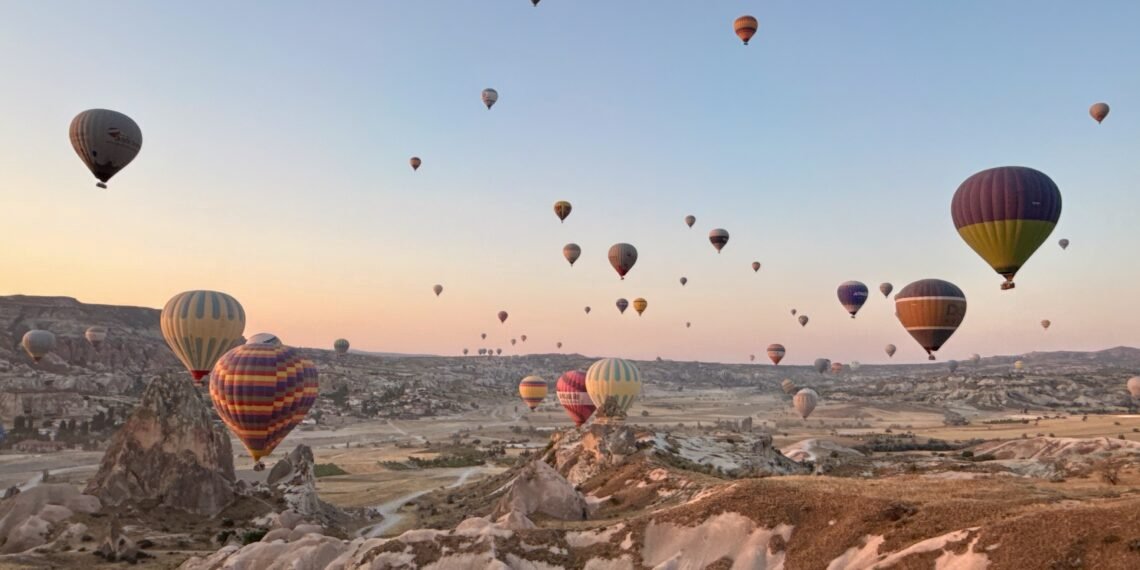A Cappadocia hot air balloon ride is one of the world’s most iconic travel experiences. Join me on my first flight into the dawn sky, where I drifted silently above Türkiye’s surreal landscape as hundreds of balloons rose with the sun.
1 Cappadocia Hot Air Balloon: A Dream at Dawn
appadocia is one of those places that doesn’t look real. The land is filled with sharp stone spires, honeycombed cliffs, and caves carved into soft volcanic rock. They call them “fairy chimneys” (peri bacaları in Turkish), and as strange as they are from the ground, they become something entirely magical when seen from above.
On my third trip to Türkiye, I finally had the chance to see them the way I had always dreamed – drifting silently in a hot air balloon as the sun rose over Göreme.
2 Quick Facts about Cappadocia Hot Air Ballooning
- Location: Göreme, Cappadocia, Türkiye.
- Best Time to Fly: Sunrise, when winds are calm and the light is spectacular.
- Flight Duration: About 1 hour (plus prep and landing time).
- Altitude: Typically 300–600 metres (1,000–2,000 feet).
- Capacity: Large baskets can carry 20+ passengers, divided into compartments for balance.
- Number of Balloons: On peak mornings, over 100 balloons can fill the sky.
- Season: Flights run year-round, but summer offers long daylight and clear skies.
- Fun Fact: The champagne toast after landing is a tradition dating back to the first French balloon flights in the 1780s.
3 A Cave for the Night
Staying at the Harman Cave Hotel in Göreme added to the magic of Cappadocia. The carved stone walls and rooftop terrace gave me the perfect front-row seat to the dawn balloon flights. My room was carved directly into the hillside, the walls etched with the same volcanic tuff that makes the fairy chimneys outside. To lie in bed, surrounded by rock shaped by both nature and human hands, felt like sleeping inside a piece of geological history. If you want to combine a cave stay with the Cappadocia hot air balloon experience, I can recommend this hotel – or see the latest options for Göreme hotels.
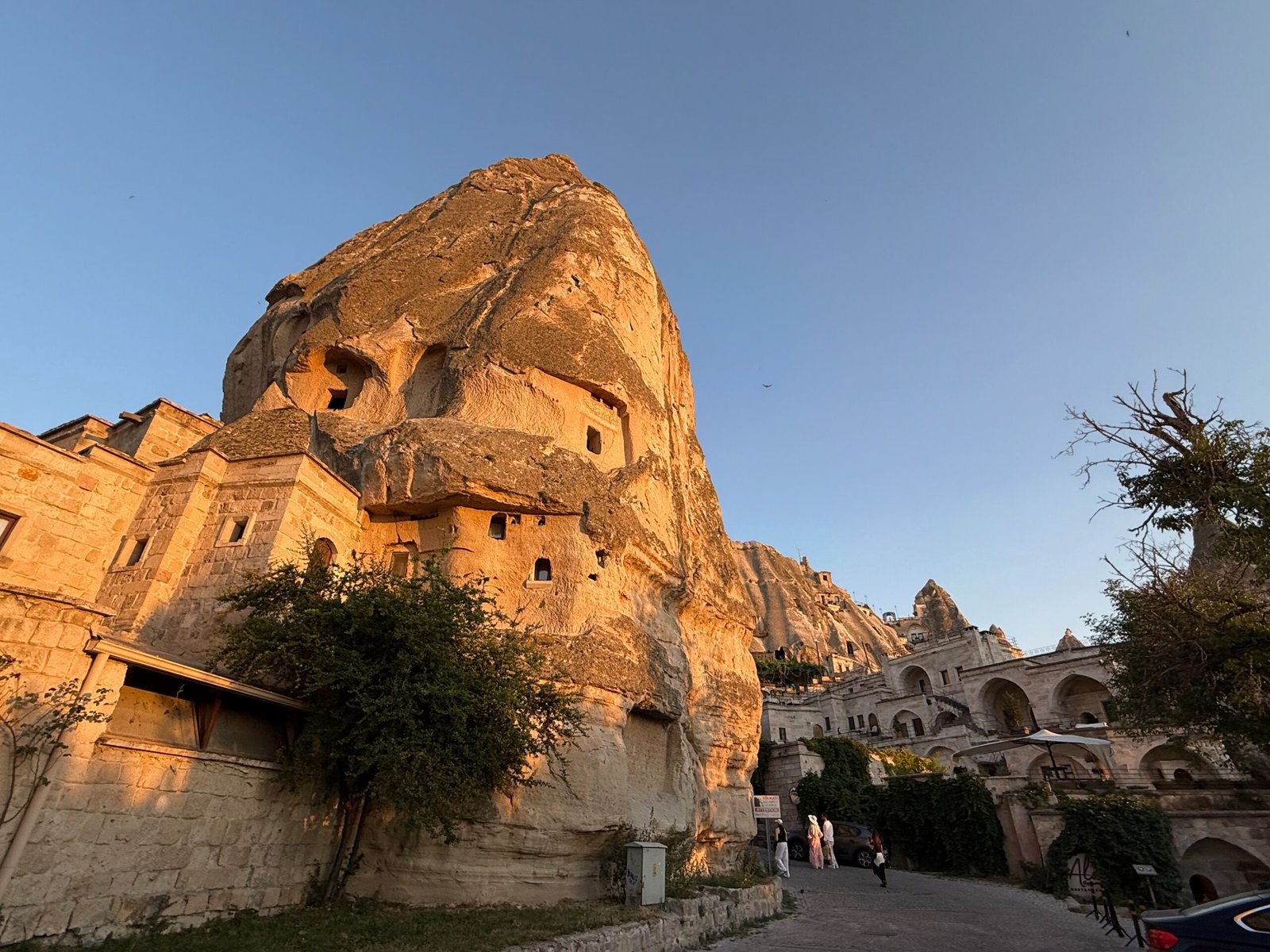
4 The Early Call
At 4:20am, I went down to the hotel lobby where a van from Rainbow Balloons pulled up. With a mix of sleepy anticipation and nervous excitement, I climbed aboard for the short ride through the darkened streets of Göreme. We soon arrived in a wide open valley where preparations were already underway. My flight with Rainbow Balloons, arranged through the hotel, could not have been better. The crew was professional, the balloon felt safe and well-managed, and the experience was flawless from pickup to champagne toast. There are plenty of operators in the region, though, so you can see the latest options for Göreme hot air balloon tours to compare and find the right fit.
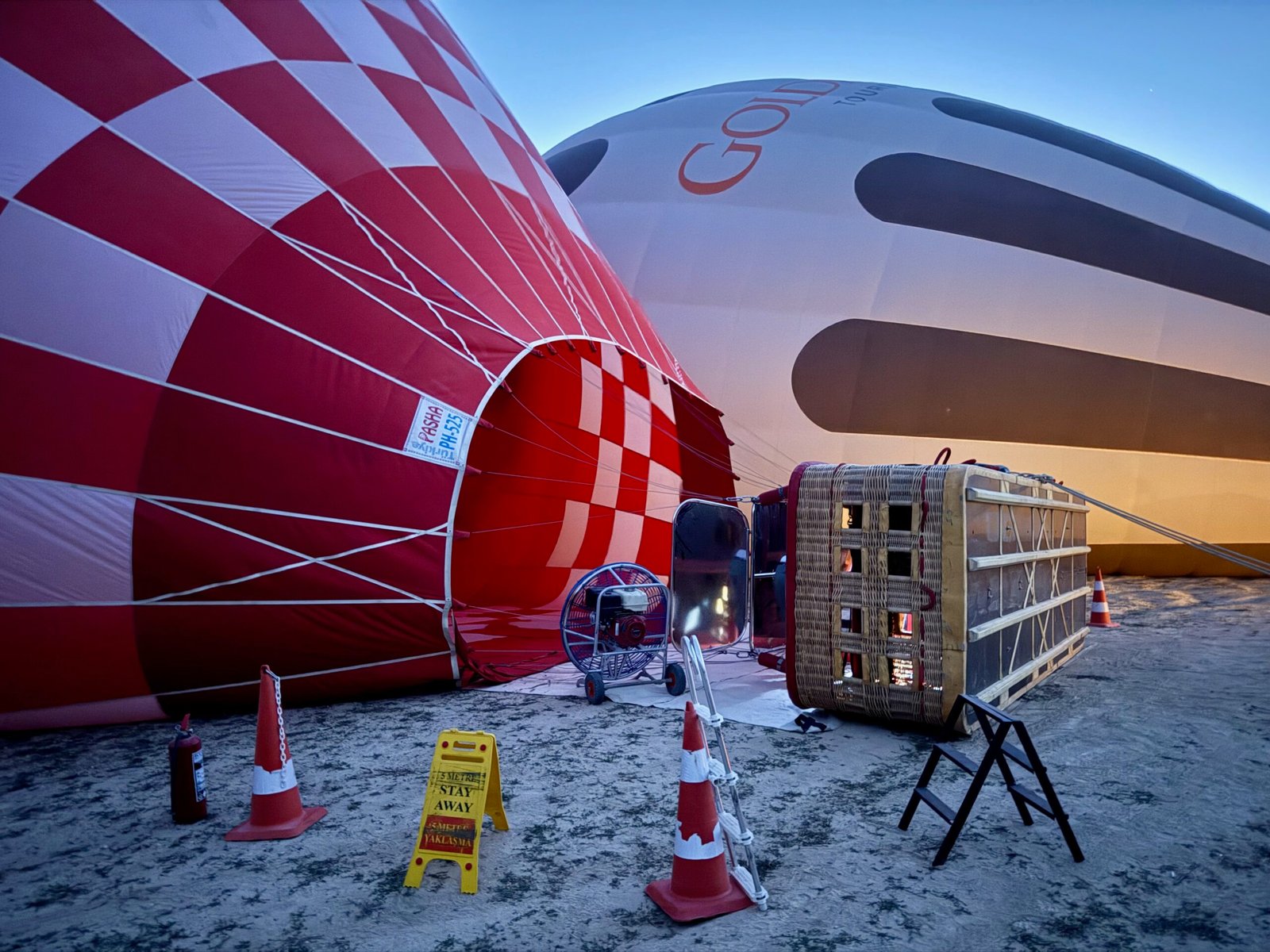
Even in near darkness, the scene was electric. All around us, crews were working on their balloons, the fabric laid across the ground like enormous sleeping giants. Then came the first blast of the propane burner – an eruption of flame that roared into the envelope, lighting it up from within like a lantern.
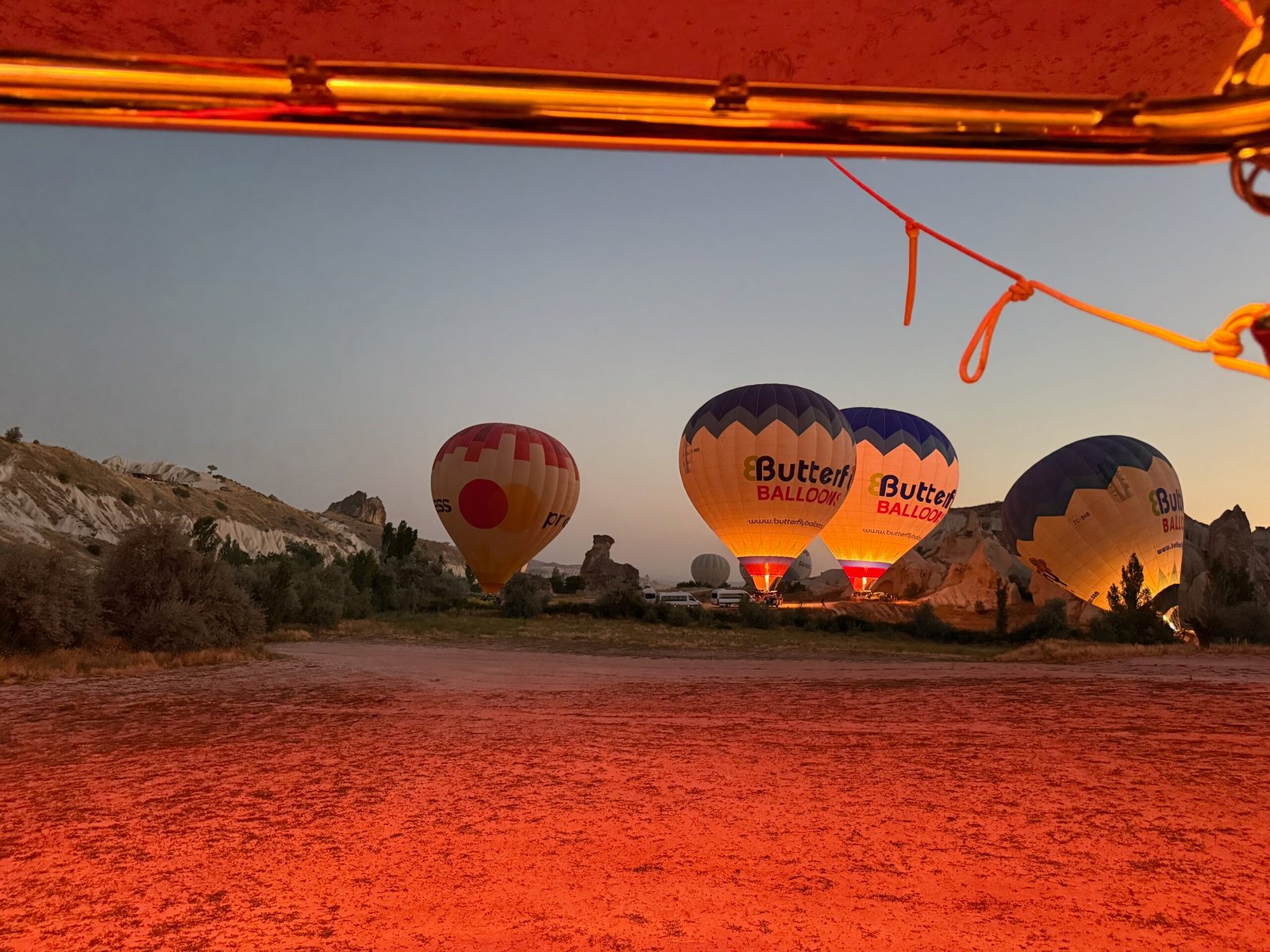
It was surreal: the glow of fire inside the balloon, the hiss of burners breaking the silence of dawn, and the shapes of dozens of balloons slowly coming to life all around us.
5 You Might Also Like:
- Tokyo Tower Sunset: A Fiery Mount Fuji Rises at Twilight – Watch the science of light unfold as Mount Fuji and Tokyo’s skyline glow in fiery colors from the tower at sunset.
- Mount Bromo Volcano: Geology, Caldera & Eruption Science – Trek across Indonesia’s Sea of Sand at dawn and uncover the explosive geology behind Mount Bromo’s active volcanic caldera.
- Kawah Ijen: Midnight Trek, Blue Fire & Volcano Science – Hike into the night to witness Kawah Ijen’s rare blue fire and learn the volcanic chemistry behind this otherworldly phenomenon.
6 Science in Action
I’ve always loved flight, and watching the process unfold was like seeing physics come alive. Hot air ballooning works on the simplest of principles: hot air rises. By heating the air inside the balloon with propane flames, it becomes lighter, or less dense, than the cool air outside. That buoyancy is enough to lift not just the balloon but a massive wicker basket, twenty passengers, and the pilot.

The pilot doesn’t steer in the conventional sense. Balloons drift with the wind, and direction is chosen by changing altitude, catching different wind layers that flow in different directions. That’s why flights happen at dawn when the air is calmest, the winds most predictable, and the light most spectacular.
7 Boarding the Basket
When I saw our balloon basket up close, I was stunned by its size. It was easily the length of a small car, divided into compartments so groups of two to four could stand together. I realized quickly this wasn’t just for comfort – the compartments help keep weight balanced, so passengers can’t all rush to one side and throw the balloon off balance.
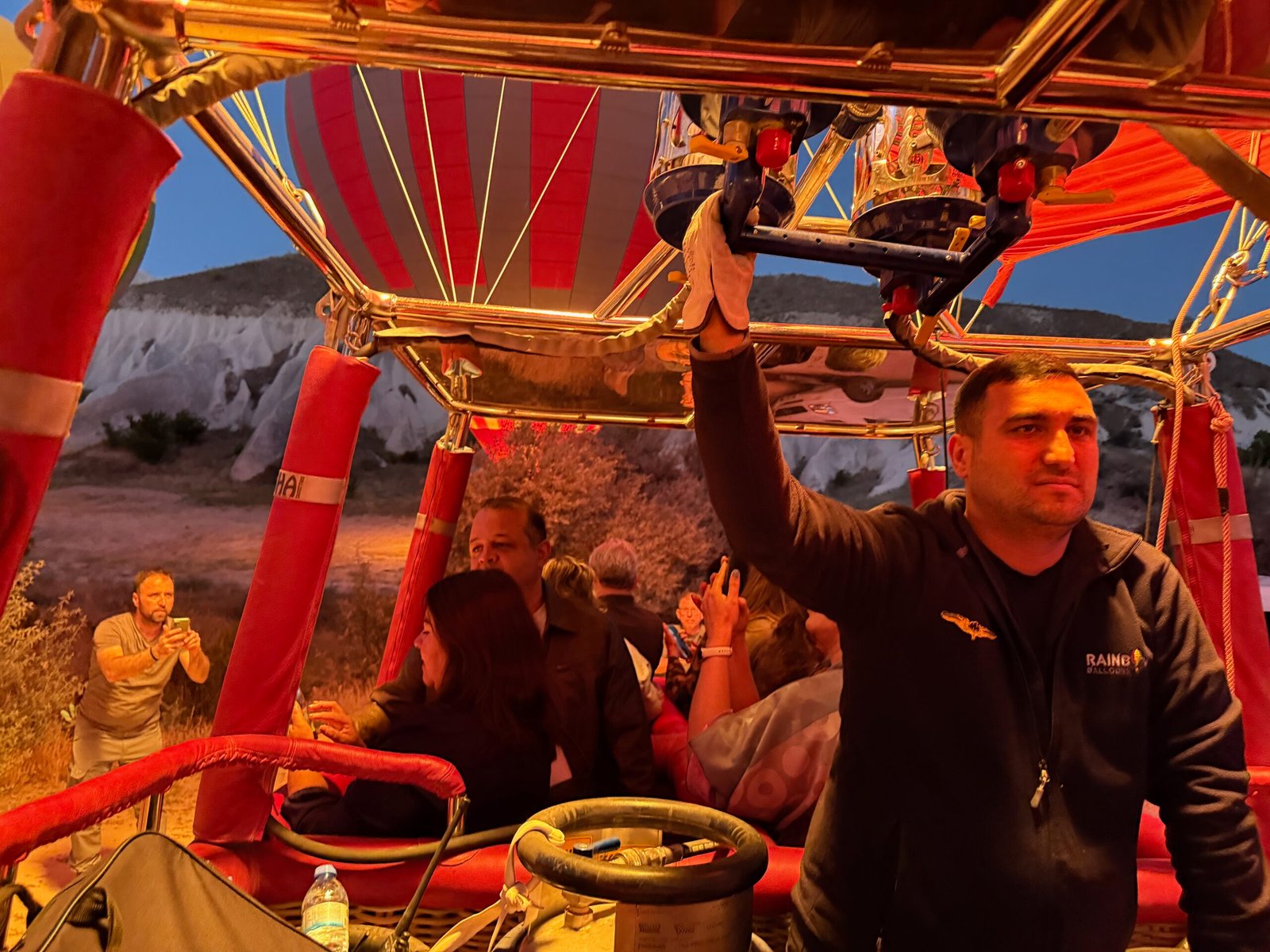
With the balloon now upright and tethered securely to a truck, it was time to climb in. The burners fired again, sending a wave of heat down into the basket. I could feel the pulse of flame as the balloon strained to rise, only held in check by the crew’s ropes.
Then, with a final release, we were free.
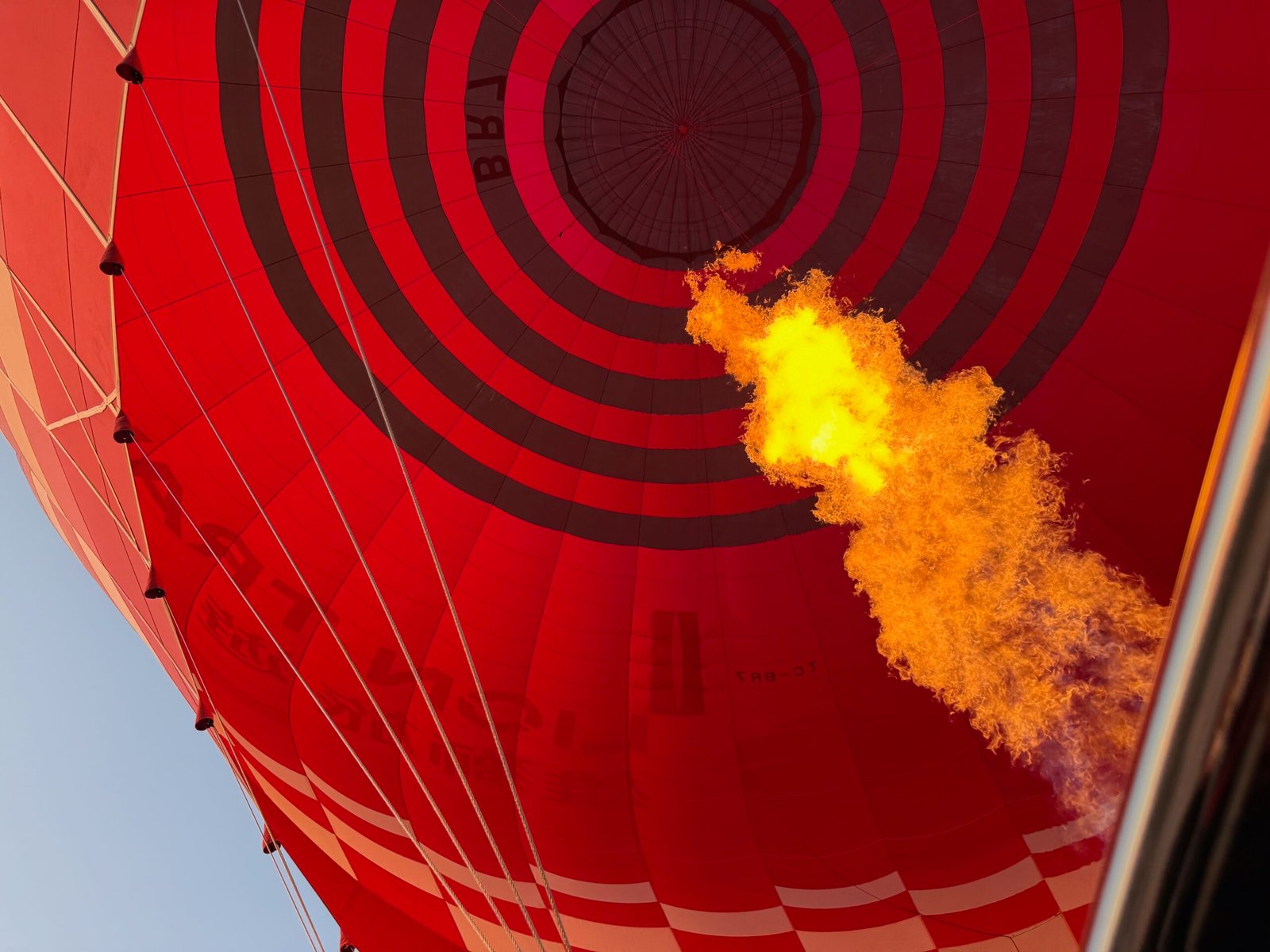
8 Rising With the Sun
The ground fell away gently, almost imperceptibly at first. Then, all at once, we were airborne, rising into a sky that was filling with other balloons. By the time we were fully aloft, I counted more than a hundred drifting all around us. It was a scene I had only ever seen in photographs, and yet here I was, floating inside it.

At first, we skimmed low over the landscape. The fairy chimneys looked even stranger from above – towers of rock capped with harder stone, shaped by millions of years of wind and rain into mushrooms, cones, and spires. Some had caves carved into their sides, ancient homes and chapels that hinted at the long human history in this otherworldly landscape.
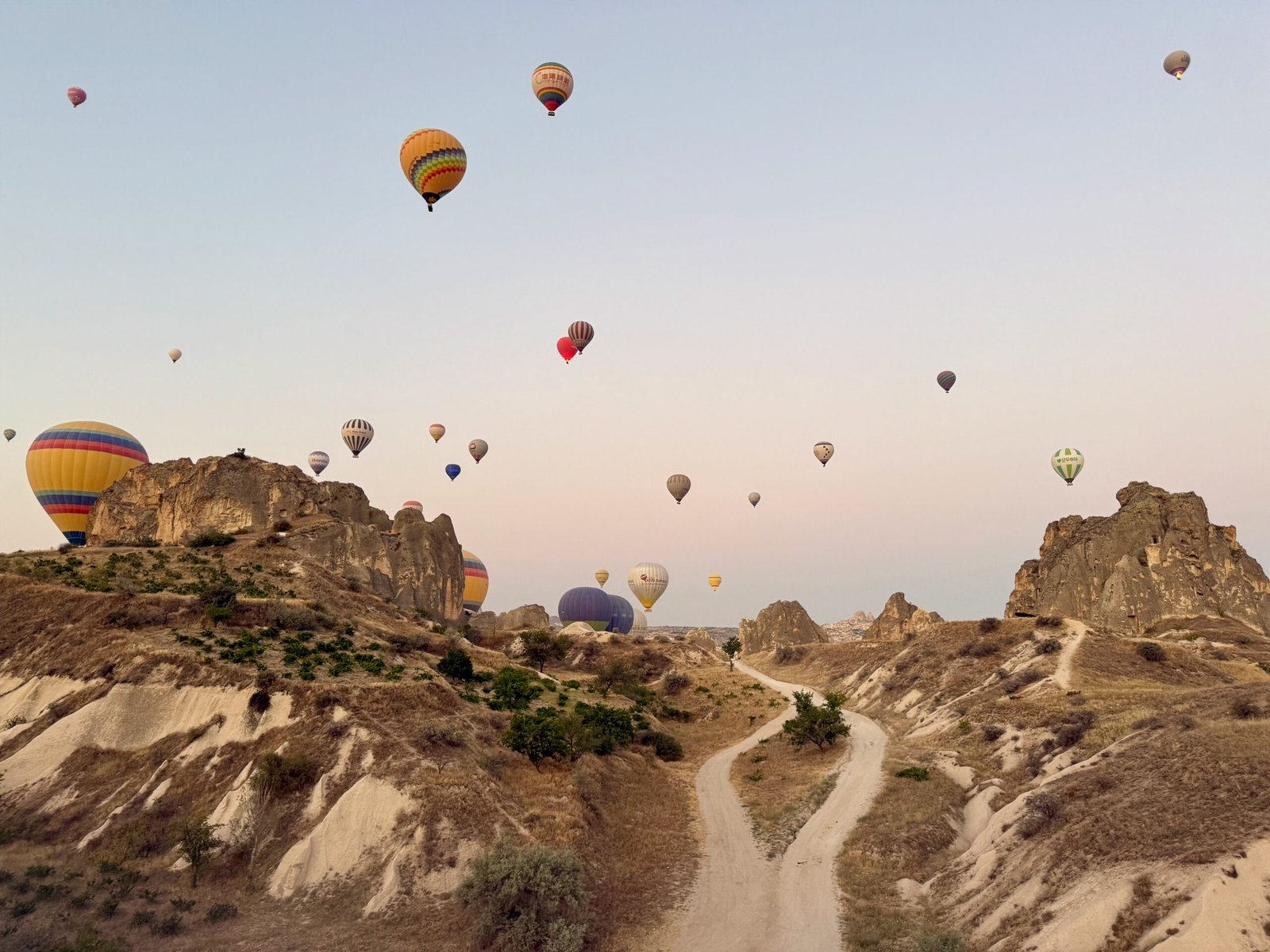
As the balloon rose higher, the full panorama of Cappadocia unfolded. Valleys cut like fingers into the plateau, ridges glowing pink in the first light of morning, and all around us, the dance of countless balloons rising and falling in perfect silence.
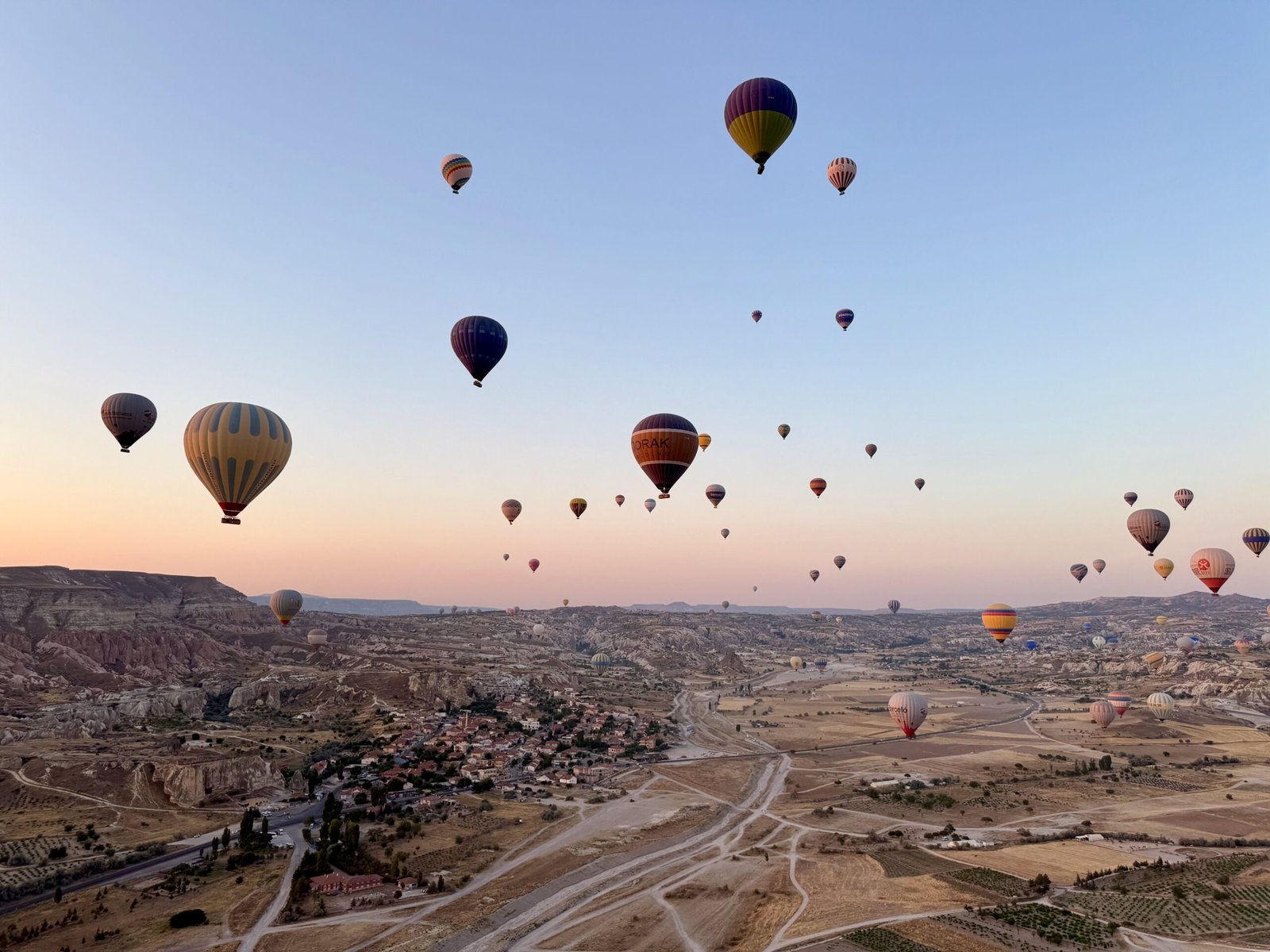
9 The Beauty of Quiet Flight
One of the most magical things about hot air ballooning is the silence. Aside from the occasional blast of the burner, there is nothing – no engine noise, no vibration, just the feeling of floating. At 300 to 400 metres above the ground, the world below was hushed, and I had a full 360-degree view of Cappadocia’s surreal terrain.
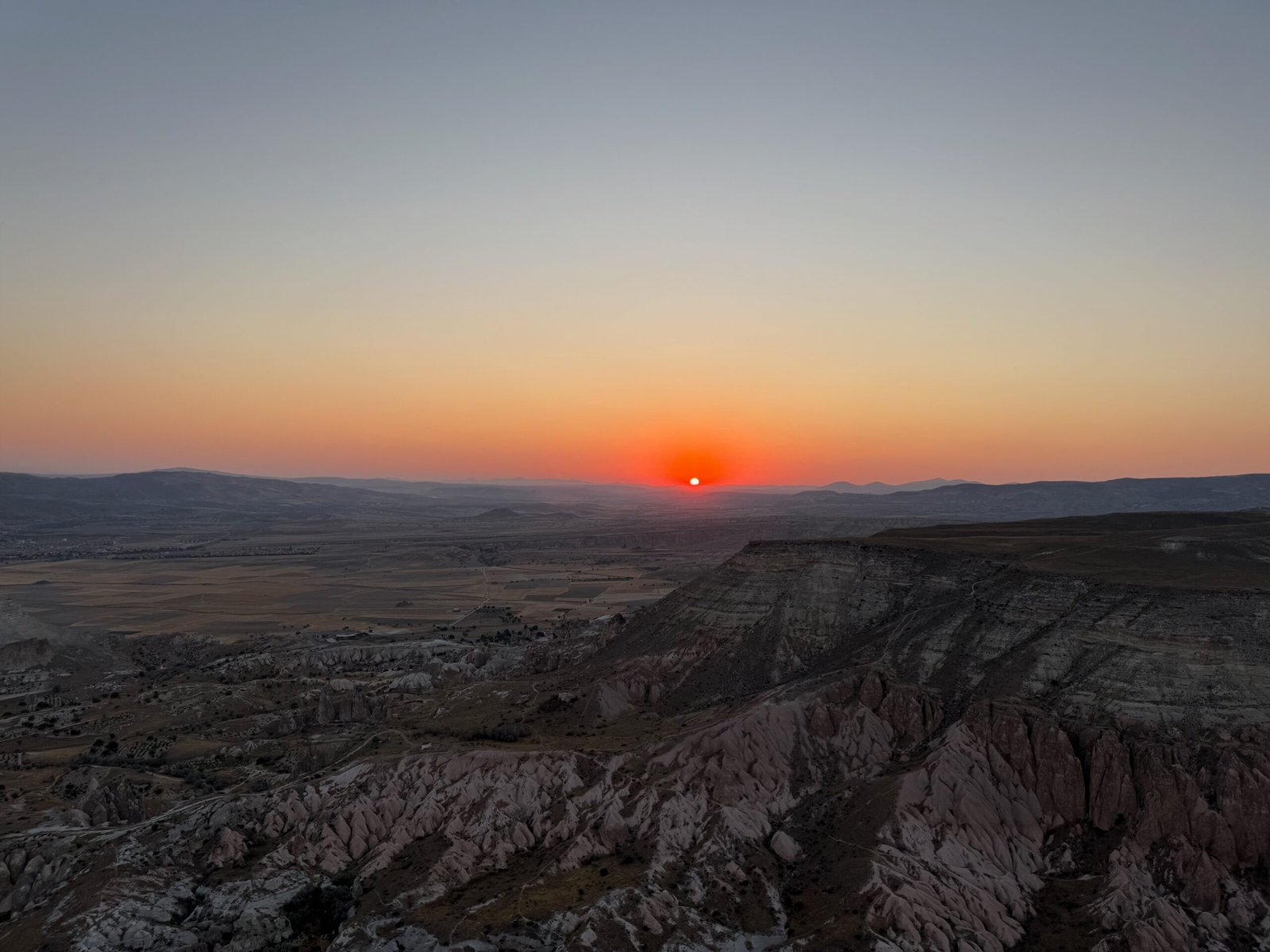
Prior to boarding the basket, the crew gave us snack packs, so I decided now would be as good a time as any to enjoy mine. How wonderful it was to sip juice and nibble on pretzels while drifting above fairy chimneys. Then, as if on cue, the horizon caught fire with colour. The sun rose slowly, painting the sky in deep reds and oranges before bursting free, lighting the land in gold. I hadn’t expected the sunrise itself to steal the show, but it was one of the most breathtaking I had ever seen.

10 The Descent
After about an hour, the pilot began our descent. The balloon glided down toward a wide field nearly 10 km (6.2 mi) from where we began. The ground crew was already there, waiting with practiced precision. As we touched down, they caught hold of the basket, guiding it to a gentle stop.
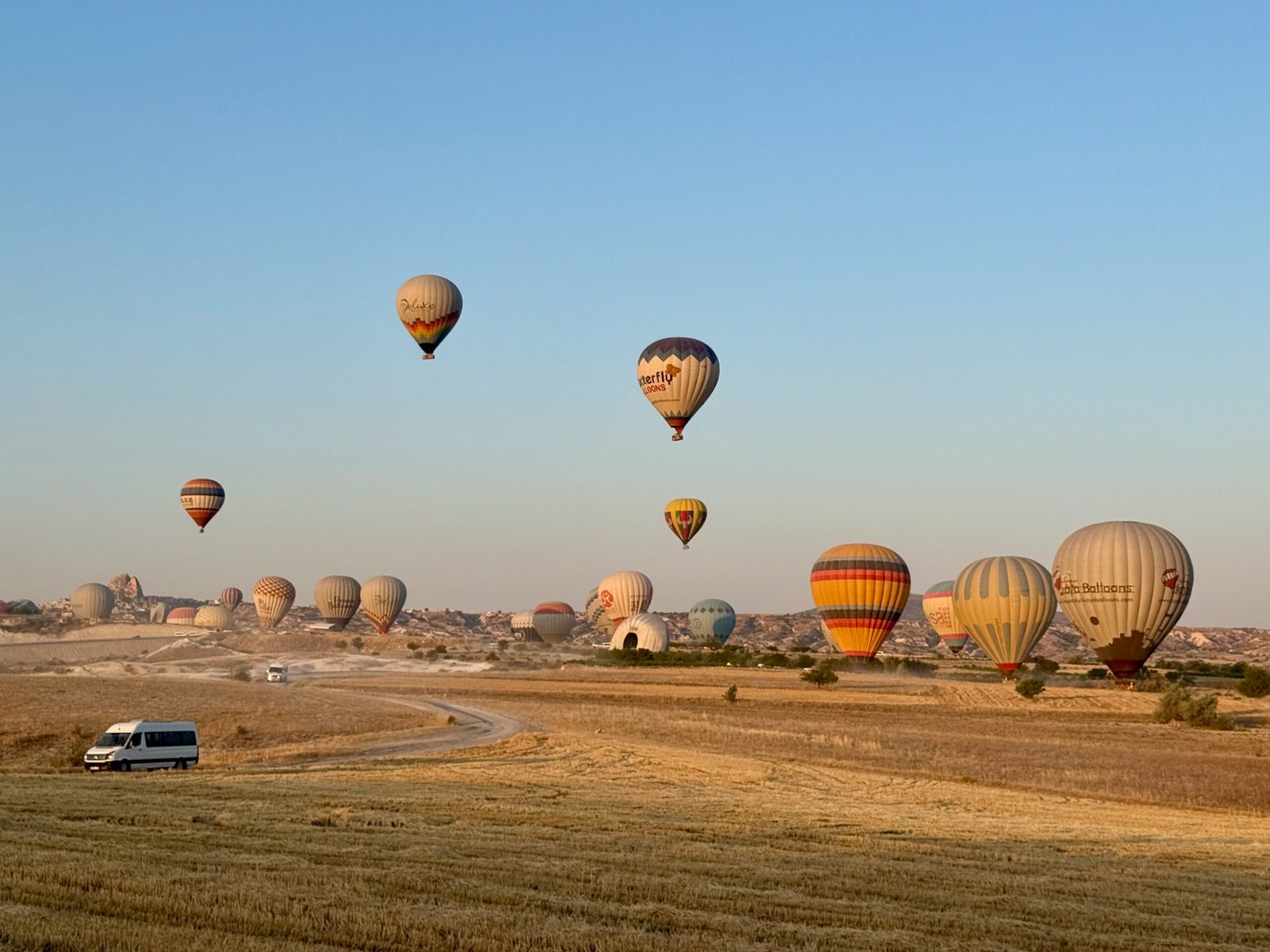
The balloon slowly deflated, collapsing like a giant creature curling back into rest. Then came a tradition I hadn’t expected: a champagne toast, a celebratory ritual that dates back to the earliest balloon flights in 18th-century France. Glass in hand, I felt both exhilarated and a little wistful that the adventure had ended so soon.
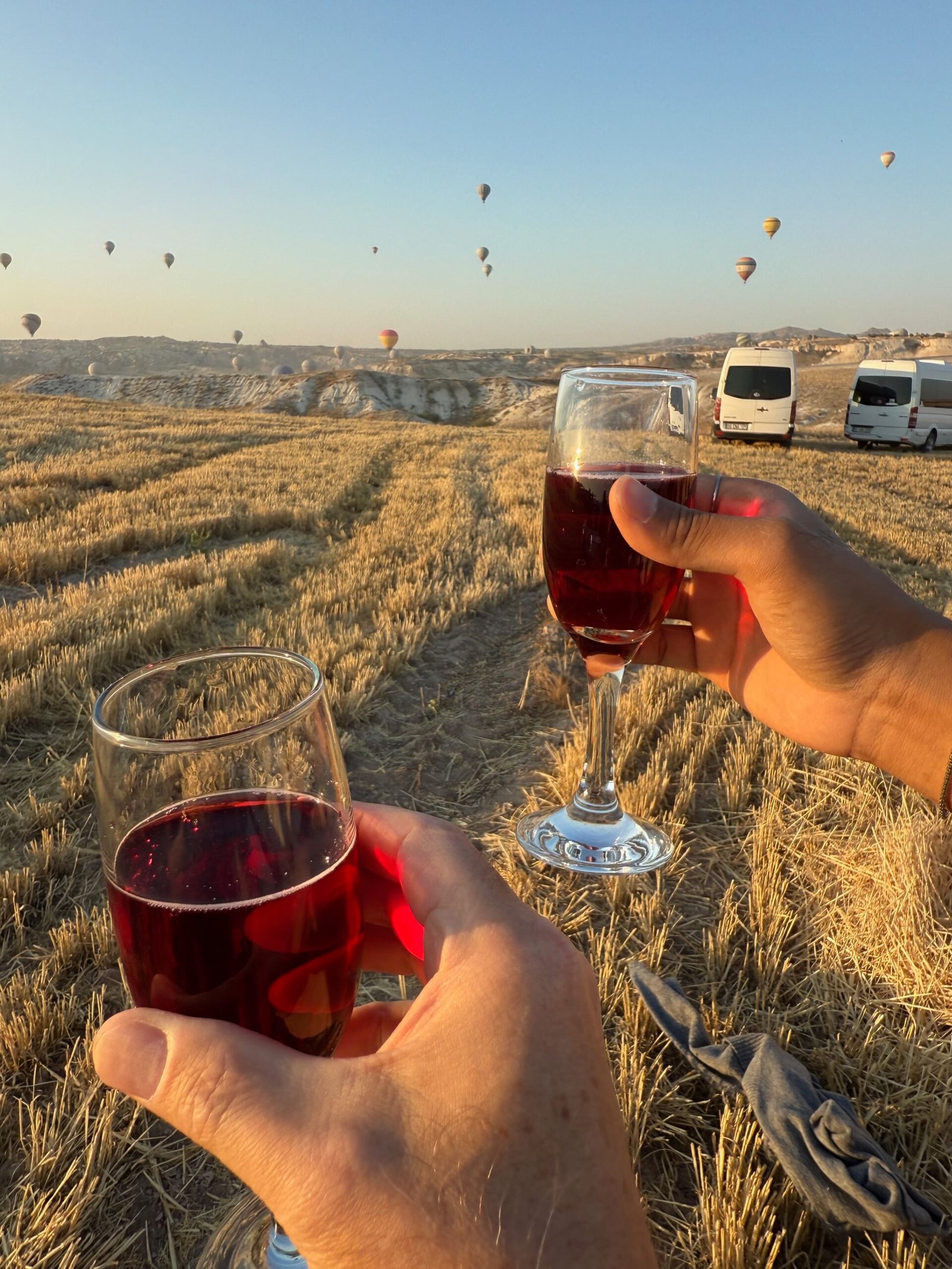
11 The History of Hot Air Ballooning in Cappadocia
When you see the sky above Cappadocia filled with more than a hundred balloons at sunrise, it feels like a timeless tradition. But ballooning here is actually a fairly recent phenomenon, with its first roots appearing only a few decades ago.
The earliest flights were experimental. In the mid-1980s, a balloon was launched in the region as part of a promotional campaign by a Turkish cassette company. Foreign pilots also tested Cappadocia’s skies around this time, running informal sightseeing flights for curious travelers. These were small-scale and novel – far from the organized spectacle visitors see today.
It wasn’t until 1991 that Cappadocia saw its first official commercial balloon flights. Local entrepreneurs and licensed pilots began offering dawn rides over the valleys, recognizing how perfectly suited the region was for ballooning. The combination of calm morning winds, stable weather, and an extraordinary volcanic landscape created the ideal conditions for this form of flight.
As tourism grew through the 2000s, so did ballooning. What began with a handful of balloons quickly became dozens, and today, on a clear summer morning, more than 150 balloons can lift into the air at once. Cappadocia has become the busiest hot air balloon hub in the world, attracting half a million passengers annually.
With this rapid growth came the need for regulation. The Turkish Civil Aviation Authority now oversees flight slots, weather approvals, and pilot licensing, ensuring that the skies remain safe even as they grow crowded. Despite the commercialization, the romance remains: a tradition of champagne toasts after landing continues, a nod to the Montgolfier brothers’ very first balloon flight in France back in 1783.

In just a few decades, Cappadocia has gone from a little-known experiment to the world’s premier ballooning destination. The flight I experienced – drifting silently into a sunrise sky filled with balloons, was not just an adventure, but a glimpse into how quickly human curiosity and innovation can transform a place into a global icon.
12 Practical Tips for Hot Air Ballooning in Cappadocia
If you’re planning your own flight, here are some simple tips I picked up along the way that can make your sunrise adventure smoother and more memorable.
- Book Early: Flights are extremely popular and can sell out weeks in advance, especially in summer.
- Wake Up Call: Expect a hotel pickup around 4:00–4:30am. Flights always launch at dawn when winds are calm.
- Dress in Layers: Even in summer, mornings in Cappadocia can be chilly before sunrise.
- Flight Duration: Standard flights last about an hour, but count on 3 hours total including pickup, prep, and return.
- Weather Matters: Flights are subject to cancellation if winds are too strong—always allow a backup day in your itinerary.
- Landing Tradition: Many operators end with a champagne toast, a nod to ballooning’s 18th-century French origins.
- Watching From the Ground: Not flying? Rooftop terraces in Göreme offer dazzling views of the balloons at dawn.
13 Pro Tips for Science Travelers
For fellow science-minded travelers, these little observations and insights can add a whole new layer of wonder to your ballooning experience.
- Physics in Action: Watch closely as the propane burners heat the air – this is buoyancy at work, with less dense hot air lifting hundreds of kilos skyward.
- Listen for the Silence: Between bursts of the burner, note how completely quiet flight becomes. This is true “silent aviation.”
- Look for Wind Layers: Notice how your balloon drifts one way at low altitude, then shifts direction when the pilot climbs higher – different air currents stacked like invisible rivers.
- Geology Below: From the air, spot the fairy chimneys capped by resistant rock layers. They’re a perfect natural example of differential erosion.
- Astronomy Angle: Dawn flights often reveal Venus or fading stars in the sky – an added celestial bonus before the sun breaks.
- Track Your Journey: Bring a mapping app like Google Maps or Gaia GPS to trace your balloon’s drifting path, and an altimeter app to measure your changing altitude in real time.
- Tune Into the Sky: A handheld radio receiver that picks up the aviation airband lets you listen to navigation chatter between balloons and air traffic control – though some knowledge of Turkish helps to follow along.
14 FAQs About Cappadocia Hot Air Ballooning
When is the best time of year to go hot air ballooning in Cappadocia?
Flights operate year-round, but the best weather is usually April to October, when mornings are calm and skies are often clear. Winter flights can be magical with snow-dusted fairy chimneys, though they’re more likely to be cancelled due to wind or fog.
What time do Cappadocia hot air balloon flights start?
Most flights begin before sunrise. Pickup at hotels in Göreme often happens around 4:00–4:30 am in summer (later in winter when sunrise is later), so you can be airborne just as the first light breaks over the valleys.
How long does a typical hot air balloon flight last?
Standard flights last about 60 minutes, although the full experience, from pickup to champagne toast, usually takes 3–4 hours.
Is hot air ballooning in Cappadocia safe?
Yes. Cappadocia’s ballooning industry is strictly regulated by the Turkish Civil Aviation Authority. Flights only depart with favourable weather, and pilots are licensed professionals. Safety briefings and experienced ground crews are standard.
What should I wear for a Cappadocia hot air balloon ride?
Dress in layers, since early mornings can be chilly even in summer, but temperatures rise quickly after sunrise. Flat, sturdy shoes are recommended for climbing into the basket and for landing in fields.
How much does a Cappadocia hot air balloon flight cost?
Prices vary by season and operator but typically range between USD$100-$300 per person for a standard 1-hour flight. Premium or smaller-group flights cost more.
Can flights be cancelled due to weather?
Yes. Strong winds, rain, or fog can lead to cancellations for safety reasons. If your flight is cancelled, operators usually rebook you for the next available day or offer a refund.
15 The Morning After
The next day, I woke again before dawn – not to fly this time, but to watch. From the rooftop of my cave hotel, I saw the same sky fill with balloons just as it had the morning before. From the ground, it was no less magical. Watching them drift across Göreme, glowing softly in the morning sun, I understood why people call this a bucket-list experience.

For me, it was more than that. It was the perfect combination of science and wonder: the physics of buoyancy carrying me over a landscape sculpted by volcanism and erosion, where human history has been carved directly into the stone.
Hot air ballooning in Cappadocia is more than a ride – it’s a reminder of how science lets us touch magic, and how travel brings us closer to the forces that shape our world.
And I know one thing for certain: it won’t be my last balloon ride. Once you’ve felt the serenity of silent flight, you can’t help but want to rise into the sky again.
Some links in this story are affiliate links. If you choose to buy through them, Curious Don may earn a small commission – at no extra cost to you. It helps support more science travel stories like this.

